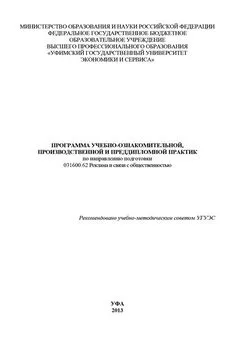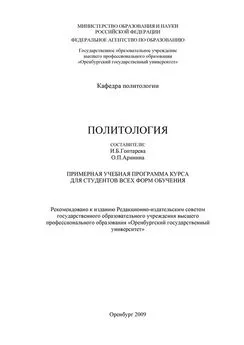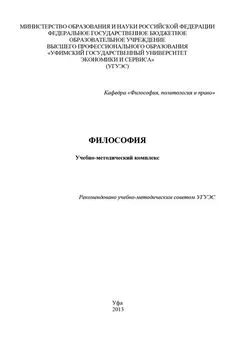Array Коллектив авторов - Переводоведческая лингводидактика: учебно-методическое пособие
- Название:Переводоведческая лингводидактика: учебно-методическое пособие
- Автор:
- Жанр:
- Издательство:Array Литагент «Флинта»
- Год:2009
- Город:Москва
- ISBN:978-5-9765-0800-2, 978-5-02-034767-0
- Рейтинг:
- Избранное:Добавить в избранное
-
Отзывы:
-
Ваша оценка:
Array Коллектив авторов - Переводоведческая лингводидактика: учебно-методическое пособие краткое содержание
Для преподавателей, интересующихся лингводидактическими проблемами обучения технике перевода, вопросами развития навыков и умений всех форм специального перевода.
Переводоведческая лингводидактика: учебно-методическое пособие - читать онлайн бесплатно ознакомительный отрывок
Интервал:
Закладка:
4) задачи публикации и метод, которым пользуется автор (анализ, обобщение опыта, экспериментальное исследование и т. д.);
5) структура публикации (деление на части, главы);
6) основные выводы автора.
Естественно, что удельный вес составных частей аннотации зависит от характера аннотируемой публикации, степени новизны рассматриваемых проблем и ряда других факторов. Средний объем аннотации – 400–600 печатных знаков, т. е. около 10 строк машинописного текста.
1) КИНГ У.Р. Наемные вооруженные силы. Современное состояние, перспективы и альтернативы. KING W.R. The All-Volunteer Armed Forces: Status, Prospects and Alternatives. «Military Review», vol. LVH, No. 9 1077, pp. 3-15. Bibliogr.: p. 15 (англ)
Статья У. Кинга, преподавателя Питтсбургского университета по вопросам организаций управления торговлей и промышленностью, посвящена проблемам, с которыми столкнулись США после перевода вооруженных сил на наемную основу. Анализируя материалы отчетов комиссий конгресса США, автор сосредоточивает внимание на финансовых и демографических проблемах. Даны количественные прогнозы комплектования вооруженных сил наемниками и связанных с ним расходов до 1981 г. Отдельно рассматриваются другие варианты комплектования вооруженных сил личным составом. Автор считает, что недостатки комплектования вооруженных сил на наемной основе должны быть тщательно изучены с целью поиска такой системы комплектования, которая оптимально отвечала бы потребностям страны как в мирное, так и в военное время.
2) ДЕЙВИС У. Сражение у Булл Рана. DAVIS W.C The Battle at Bull Run. Berkely, Calif., Doubleday & Co., 1977, 298 p. Bibliogr.: pp. 295–298, illustr. (англ)
Монография военного историка У. Дейвиса посвящена описанию первого крупного сражения гражданской войны в США в районе Булл Ран-Манассас (16–22.6.1861). В исследовании использованы многочисленные документы официальных и личных архивов. Ход сражения, а также предшествующие и последующие события описываются в хронологической последовательности. Автор комментирует действия военачальников в политическом и военном отношении. Книга насыщена иллюстративным материалом.
БЕРН Э.М. Военное право. BYRNE E.M. Military Law. Naval Institute Press, Annapolis, Md., 1976, 745 p.
Автор – коммандер Берн, сотрудник военно-юридической службы ВМС США. В 1970 г. опубликовал юридический справочник для военнослужащих ВМС и корпуса морской пехоты. Книга содержит обзор военно-юридической практики во всех видах вооруженных сил США. На основе анализа различных правовых документов, включая решения судов по конкретным делам, рассматриваются основные принципы деятельности военно-юридической службы в целом и ее особенности в каждом виде вооруженных сил. Особое внимание уделяется уголовно-правовой практике. Имеется словарь военно-юридических терминов. Книга представляет интерес для лиц, занимающихся вопросами воинского правопорядка и дисциплины. Содержится большой фактический материал о преступности в вооруженных силах США.
IV. Разделите текст приведенных выше аннотаций на составные части и назовите их.
Основная трудность при составлении аннотаций (это же относится и к реферированию) заключается в изложении задач публикации и выводов автора в одном-двух предложениях. Такая переработка информации называется аналитико-синтетической.
Она состоит в смысло вом анализе текста,вычленении единиц информации, оценкеэтой информациии ее синтезе в очень сжатой форме.
V. Изложите в одном предложении содержание прослушанного текста.
VI. Изложите максимально сжато основное содержание нижеследующих четырех текстов, используя формулировку, начинающуюся словами «В сообщении говорится».
1. The third ship to bear the name of the American Arctic explorer and scientist Robert E. Peary was commissioned September 23rd at Puget Sound Naval Shipyard. The first ship to be named for Admiral Peary was a destroyer, sunk by the Japanese in World War II. The second, an escort ship, was commissioned in 1943 and removed from the Naval Register in 1966.
2. A new sighting system, designated RGS 2, suitable for fighter or attack aircraft, has been developed' by Saab-Scania Aerospace Division in Linkoping, Sweden. Its principal advantages are its small dimensions, enabling it to be installed even in limited cockpit space, its high accuracy and reliability, and its low price.
3. The US military arms budget jumped $17.4 billion during the last three months of 1977, the Defense Department reported, including a rise of $2.7 billion in the Trident missile submarine and the F-18 fighter programs. The sharp increase in arms will be one of the highest cost overruns in the Pentagon budget. Ironically, the F-18, which will go into production in 1980, was billed by the Defense Secretary as a «low-cost» fighter program.
4. A vital link in the defense structure is the ability to deliver military materiel to strategic points in time of stress. The Air Force C-141 and C-5A transports would play important role in getting a sizable force to a critical point in short order, but, to bring in the «big staff» and to sustain an operation for any length of time, logistics probably will have to turn to water transports.
VII. Дайте максимально краткое изложение текстов.
VIII. Составьте аннотацию статьи. Используйте примечание, данное в конце ее.
FORTIFICATIONS IN THE THEATER OF OPERATIONS
Col. William G. Stewart, United States Army
(1) The conventional wisdom about the strategic use of fortifications includes two great misconceptions. One of these misconceptions concerns their general value. Some people contend that such works are not useful. Others see them as actually detrimental. These detractors invariably refer to the French use of forts and to the «Maginot Line Complex». They never seem to quote German experience or mention any «Siegfried Line Complex». The point is that it is always dangerous to bet the nation's survival on any single weapon, work of war, natural obstacle, or diplomatic device. It was not the Maginot Line which failed France, but the minds that depended on it too exclusively to save the country.
(2) The other misconception is that fortifications aid only the defense. Actually, they may help the offense just as much. They let a commander form a mobile force behind them whether that force is to attack or counterattack. With fortifications, he can save on the men he must keep in the battleline because the works will slow the enemy and permit the mobile reserve to react to any surprise move. He then has a decisive means of influencing the battle.
(3) It is essential for us to understand not only how we, the probable defenders, can use fortifications, but also how our potential enemies can use them on the offense. A study of Europe in the two World Wars shows how fortifications can be used strategically.
(4) In World War I, after their defeat in the opening Battles of the Frontiers in 1914, the French redistributed their units. Taking advantage of their forts in the east, General Joseph J.C: Joffre took divisions from there to weight his left flank against the German main thrust.
(5) Joffre was able to place almost three quarters of his force on about half of his front to fight the battle which he hoped would be decisive.
(6) The Germans had started in 1906 with Schlieffen's plan which put the maximum force in the decisive right wing. By 1914, however, the plan had been weakened by shifting weight toward the left and to the Eastern Front. Only two-thirds of the divisions in line were in the right wing for the Battle of the Marne.
(7) By 1940, the French should have been able to do even better. The Maginot Line, much superior to the World War I forts, guarded the eastern frontier. Part of France's border with Germany then lay on the Rhine – a stronger natural barrier than the line of 1914.
(8) Of the combined French-British forces, only half were prepared to oppose a drive through Belgium. Thus, they did not save on men in the Maginot Line to be strong elsewhere or to 'build a strategic reserve. The French had placed divisions on about the same frontage in the east as they did in the north. After the German attack began, the 22 Belgian and 10 Dutch divisions were added to the Allied force, for a total of 135. Even with these troops, the Allies had only 62 percent of their force in the main battle compared to 74 percent at the Marne.
(9) The German situation had also improved. In 1914, General Helmuth von Moltke had only isolated forts to protect his left flank from the French while massing his own main attack on the right of his line. In 1940, the Germans were considerably better off in this respect. The Siegfried Line and part of the Rhine let them reduce the forces on the left. They took advantage of these changes and put 81 percent of their committed divisions into the main battle compared to 66 percent in 1914.
Читать дальшеИнтервал:
Закладка:










